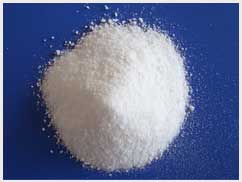Anhydrous Sodium Sulphate Plant

Sodium sulfate, known as disodium sulfate and Sodium sulphate, in its anhydrous form with
high purity, is used in the manufacturing of detergents, paper, and glass and has many
chemical applications. It is produced from natural minerals like Mirabilite, Glauberite and
Thernadite, or from natural salt lakes and as a byproduct of a verity of chemical
manufacturing processes, such as ascorbic acid, battery acid recycling, boric acid,
cellulose, chromium chemicals, lithium carbonate, rayon, resorcinol, and silica
pigments.
Manufacturing of anhydrous Sodium Sulphate involves following process,
- Dissolution Process.
- Purification Process.
- Crystallization Process.
- Separation Process.
- Drying Process.
The final product obtained from spray dryer is in powder form. By varying the operating parameters of the spray dryer the required powder characteristics such as moisture, particle size, bulk density, flowability, Particle Morphology etc. can be achieved.
Production and preparation
Sodium sulfate can be obtained directly from the minerals or from the treatment of sodium
chloride with sulfuric acid and evaporating to crystallization:
It is also produce industrially by the reaction of magnesium sulfate and sodium chloride in
solution followed by crystallization. In both cases, Sodium sulfate is subsequently
crystallized as the decahydrate product which can easily convert to anhydrous form upon
heating.
Applications
- The anhydrous salt is used for drying certain organic liquids, Because of its moisture-adsorbing ability.
- It is also used in the manufacture of glass, paper pulp, paper board, and as a raw material for the production of various chemicals.
- Sodium sulfate is also used as a filler and extender in dry powder, laundry and dishwashing detergent products.
- In textile industry, the anhydrous salt is added to the dye bath to drive the dye from the solution onto the fibers and to promote an even finish.











